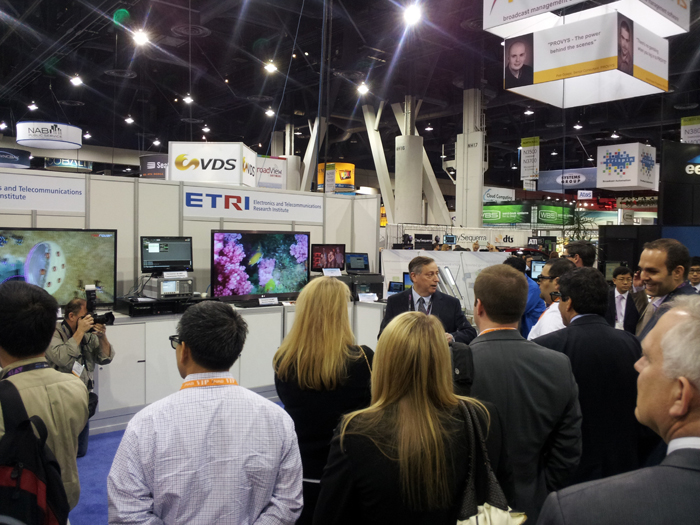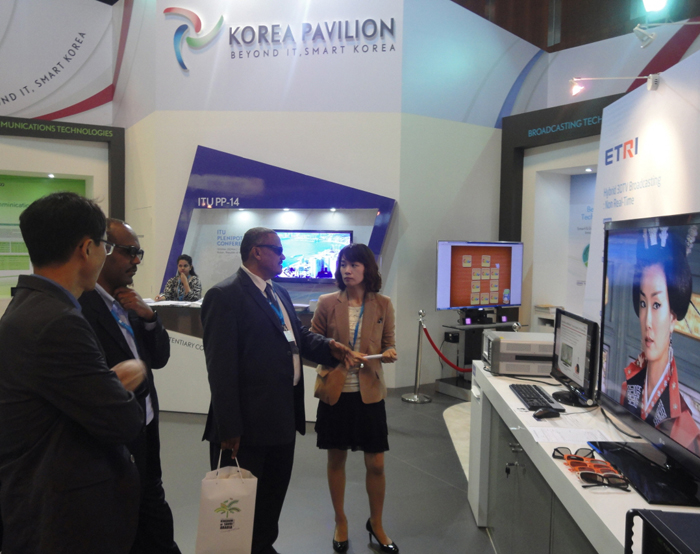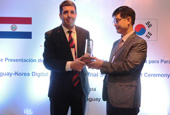An advanced broadcasting technology developed by Korean engineers has been adopted as the next generation digital broadcasting standard in North America and Japan.
Moving Pictures Expert Group (MPEG) media transport technology is an Internet protocol (IP)-based transmission method developed by the Electronics and Telecommunications Research Institute (ETRI) and Samsung Electronics. It is expected to be applied to next generation broadcasting services in the near future.

In relation to that, NHK, a Japanese broadcaster, set up an exhibit to demonstrate MPEG media transport (MMT) technology last month. It had a seamless switchover between broadcasting and Internet networks, switching to the new technology between May 28 and May 31. NHK plans to start a pilot service of super hi-vision broadcasting (8K) based on MMT technology next year. It will then fully launch the service in 2018. So-called 8K technology is a next generation broadcasting standard with 7,680 by 4,320 pixels. It boasts four times better resolutions than the current ultra-high definition (UHD) service, which is known as 4K.
MMT is a transmission standard announced by the Moving Pictures Expert Group, (MPEG), a working group of authorities that was formed to set standards for multimedia compression. MMT was also adopted as the next
generation digital broadcasting standard in North America earlier this year. The adoption of MMT is expected to solve various problems arising from IP-based multimedia services. The existing IP-based multimedia services require a long buffering process to initially receive a certain amount of data and are prone to disconnections and interruptions.
Jiao Tong University in Shanghai, which has been developing China's next generation broadcasting service standard, is also considering the adoption of MMT. It is also being considered as the standard for UHD broadcasting in Korea.

By Limb Jae-un
Korea.net Staff Writer
Photos courtesy of the ETRI
jun2@korea.kr
Moving Pictures Expert Group (MPEG) media transport technology is an Internet protocol (IP)-based transmission method developed by the Electronics and Telecommunications Research Institute (ETRI) and Samsung Electronics. It is expected to be applied to next generation broadcasting services in the near future.

MPEG media transport (MMT) technology developed by the ETRI and other Korean corporations has been adopted as the next generation digital broadcasting standard in North America and Japan.
In relation to that, NHK, a Japanese broadcaster, set up an exhibit to demonstrate MPEG media transport (MMT) technology last month. It had a seamless switchover between broadcasting and Internet networks, switching to the new technology between May 28 and May 31. NHK plans to start a pilot service of super hi-vision broadcasting (8K) based on MMT technology next year. It will then fully launch the service in 2018. So-called 8K technology is a next generation broadcasting standard with 7,680 by 4,320 pixels. It boasts four times better resolutions than the current ultra-high definition (UHD) service, which is known as 4K.
MMT is a transmission standard announced by the Moving Pictures Expert Group, (MPEG), a working group of authorities that was formed to set standards for multimedia compression. MMT was also adopted as the next
generation digital broadcasting standard in North America earlier this year. The adoption of MMT is expected to solve various problems arising from IP-based multimedia services. The existing IP-based multimedia services require a long buffering process to initially receive a certain amount of data and are prone to disconnections and interruptions.
Jiao Tong University in Shanghai, which has been developing China's next generation broadcasting service standard, is also considering the adoption of MMT. It is also being considered as the standard for UHD broadcasting in Korea.

The adoption of MMT is likely to solve many problems arising from IP-based multimedia services, such as long buffering periods and possible interruptions.
By Limb Jae-un
Korea.net Staff Writer
Photos courtesy of the ETRI
jun2@korea.kr


